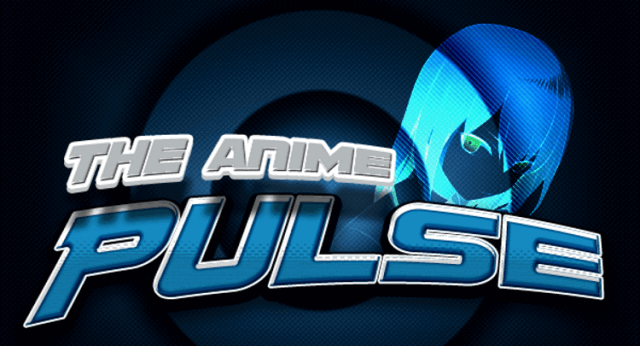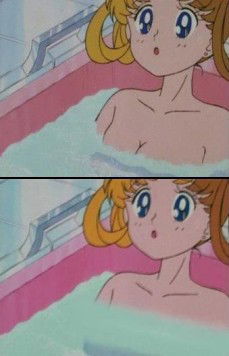Hello everyone and welcome to another edition of The Anime Pulse. This time I want to talk about something that I know a lot of Anime fans are rather annoyed with, myself included and, perhaps, shed some light on as to why we are annoyed as well as the flip side of the coin to gain a better understanding of why it happens.
That being censorship in anime.
Nothing has been more frustrating than waiting for that exciting moment to happen. Someone is about to get hurt and get hurt bad. You’re on the edge of your seat waiting for the bullet to rip the flesh.. the sword to slice through to the bone.. the grenade to evaporate a limb.. and then…
BAM!
Black bar!
Inverted colors!
Pixelization!!
You’re left feeling dejected, puzzled, angry, annoyed, or any combination of the aforementioned. Your were waiting for that moment… you prepared yourself and were ready to sink your teeth into the juicy flesh of carnage and destruction… to see the gore in its bloody glory and then, in a single solitary instant, you feel robbed because now you have to wait for the Blu-Ray release to enjoy what you feel you should have already enjoyed right then and there.
It’s not just with the gore either, people. All those curvy anime girls that you know and love so much also fall prey to the occasional sunbeam, the ever-so-apparent bathroom steam, or sometimes a stack of soda cans placed right in front of the camera looking at the doorway when your scantily clad waifu strolls into the scene almost wearing her entire birthday suit.
Censorship has been sending anime fans up in arms for quite some time now so I figured that I would dedicate this column to looking into the practice of censorship.
First off, a lot of people want to point the finger at Higurashi no Naku Koro ni (here in the states, When They Cry). This show did get a lot of attention because it was uncensored. That all changed one day when there was a real life murder in Japan that was pretty close to something that happened in the show. Rena always wielded a meat cleaver in Higurashi and there was a murder in Japan that used the same weapon and ties to the show were found. When the sequel came out, Higurashi no Naku Koro ni Kai, about half way through the show, the opening was changed to remove the cleaver from it and soon thereafter, scenes of gore in various anime shows were beginning to get the treatment that we are seeing today.
The thing is though, this wasn’t really noticeable before because a lot of the censorship was being done to the American releases. The native Japanese footage was usually left untouched, but now we are seeing that happen more and more as the years go by. People will typically watch the Japanese show with English subtitles and some even swear by that method when watching a show. Since the majority of the anime fans prefer this method, they are starting to notice it more because censorship has made its way into the raw footage.
To those who strictly watch the Japanese footage, it may be shocking to know that censorship has been around for a lot longer than Higurashi. As I mentioned, the bulk of the censorship was taken care of here on the American releases. Sailor Moon is a fantastic example because there was a myriad of changes from the original source. All of the notions that suggested lesbian relationships were removed from the show and sometimes bath water was added to cover up cleavage.
One Piece removed all of the blood from Monkey’s hands after a fight. When Disney XD aired Naruto Shippuuden, black bars were placed over the Sand Ninja’s heads after Deidara blew them up using plastic explosives. They even went as far as to pipe in noises of men groaning just to indicate that they we still alive. Those are just some examples of what has happened to anime, but it is life and culture that dictates what does and does not get censored. A lot of that has to do with government and law as well.
News agencies in both Japan and The United States often take pride in exposing the less than proper side of anime. Items such as body pillows, ecchi manga have triggered some governmental reaction and as well as set standards toward obscenities. Over the years, these standards are becoming more and more enforced, which doesn’t sit well with a lot of the otaku and anime fans out there. With the Olympics in Japan in a few years (2020), It is expected that this trend will spike in the coming years, despite many protests from both creators and fans alike. I mean, when your country is going to be hosting the Olympics, the pinnacle of athleticism in the world, the last thing you want your country to have is a huge black eye in the form of animated indecency. That would just be embarrassing!
If you’re hoping that the recent harsher law enforcement will instantly subside, then I’m afraid I’ve got some bad news. It will likely remain a constant and possibly become an increasing threat on all works that are published now and indefinitely into the future. As Japan integrates further with the modern world, it is expected that censorship will continue to grow along with it to match that integration.
That means you can expect more black bars, more cleverly placed scenery objects, more sunbeams shining in rooms with no windows in the exact spots your eyes want to drift to and so forth. Or, if you’re in the case of Terra Formars, you can just lazily photoshop in some solid black circles and make it painfully obvious as to what in the blue hell you’re trying to hide.
So the question is.. what are we to do? Unfortunately, there is nothing we can do. This isn’t something that can be changed with a petition. Like I said before, there is always the Blu-ray release and you can pay to own it or you can acquire it through other means that I will not condone in this column. Whatever your choice is, there is always that alternative.
This brings up the question of why can you get it uncensored on Blu-ray, but the television station cannot air it without censors?
That’s a no-brainer. It’s because when you create and green-light an anime, certain things are discussed from what material will be adapted, to the demographic that is being targeted by the material, all the way down to the most important one… what channel and time slot will this air on? Just like his in America, Japan has television channels for different demographics. They have channels for kids, families, young adults, and adults alike. If the anime is stuck on a family or teen channel at 7PM in the evening when everyone is home from work and school, then yes, you are going to have censorship. If it’s on an adult channel at 1:30AM in the morning, then it’s perceived that the kids are in bed and only the adults who can afford to stay up that late will be the ones watching it so while there may be some censorship, it’s going to be extremely relaxed.
Blu-ray doesn’t have those issues. When it’s put on physical media, it is left up to the consumer to choose whether or not to watch it. The product will be properly rated for you to make your judgement and if even if you don’t know if you can buy it or not, the store’s staff is responsible from preventing the sale to people under the rating age bracket. In other words, physical media is in a more controlled environment than television where anyone and everyone could walk by and see what’s being aired.
Is it frustrating? Yes, of course.
But it is something we are going to have to live with.
So I’d like to hear your thoughts on this matter. Do you think the censorship is fine? Do you think countries and laws are being too strict? Do you think we, as a society, have become too soft and believe that’s what has led to censorship? I’d like to know your opinions so send them on over to joshpiedra@theouterhaven.net. I will be sure to include them in a future edition of the column!
You can also follow me on social media… so if you feel inclined to do so, head over to my Twitter account @pulsein and press that Follow button!
Until next time,



